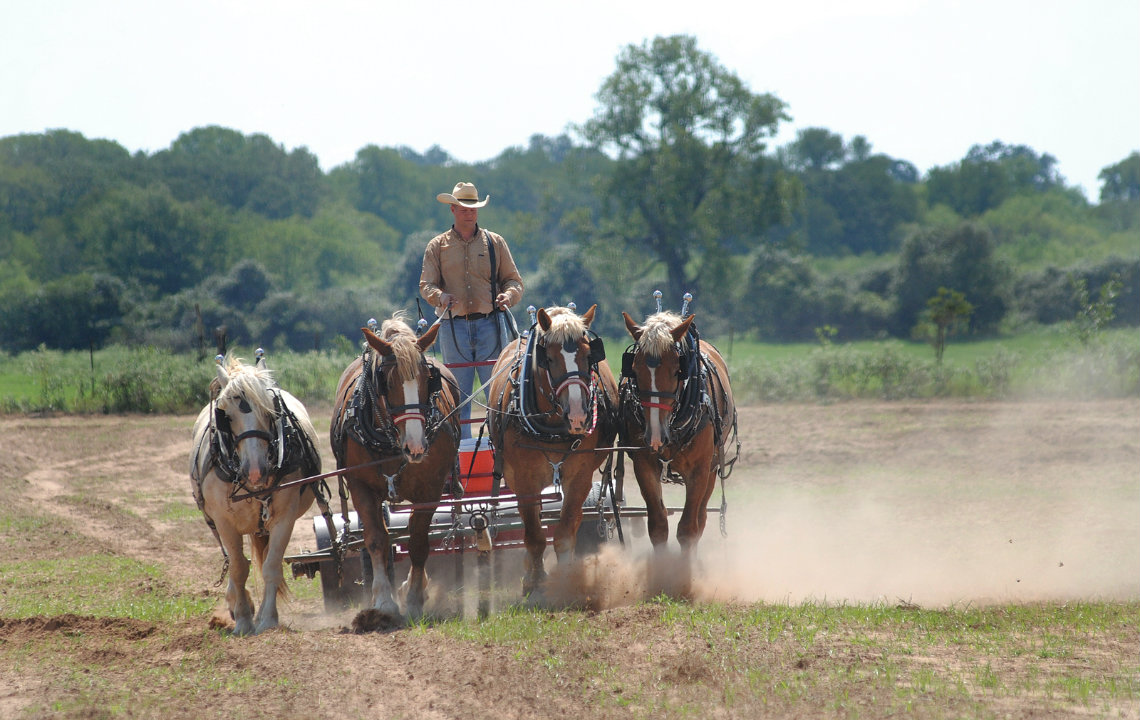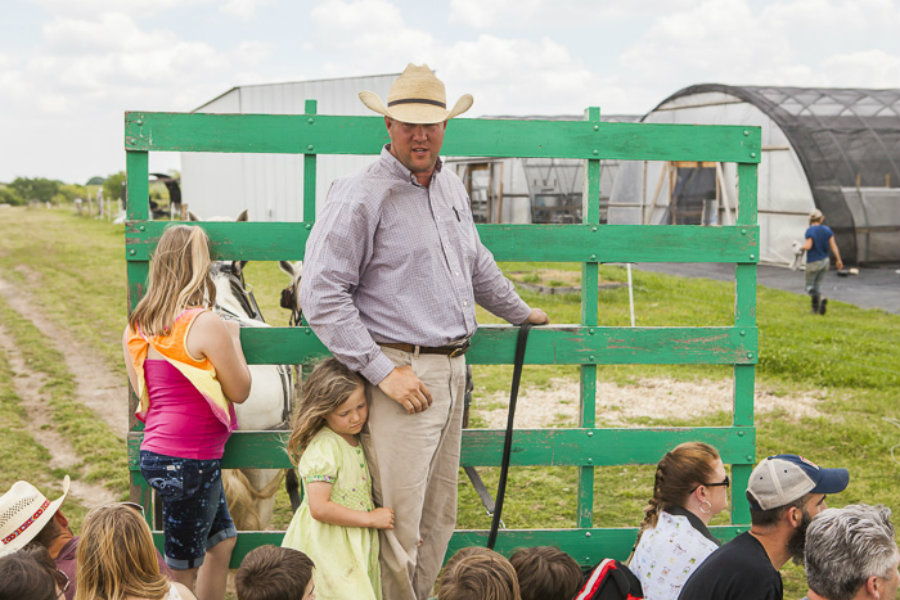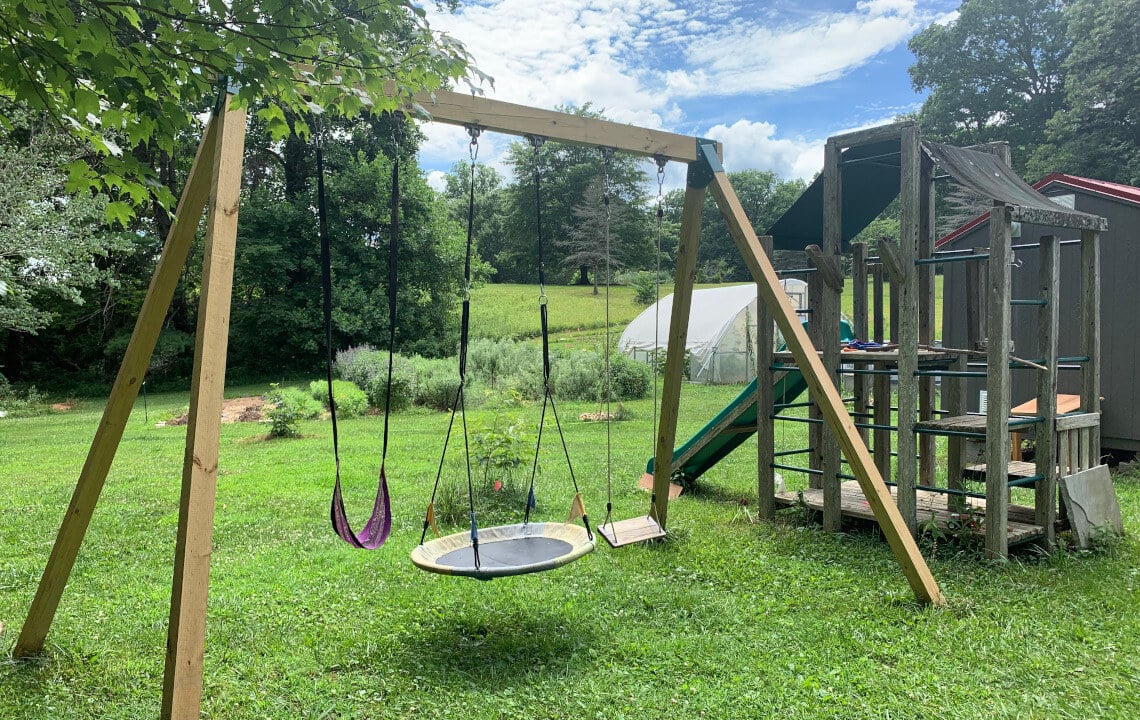Ben Godfrey tells how many acres you need for a hobby farm and shares his story of transitioning from suburb to hobby farm to fulltime sustainable farming.
This article is part of our six-part series, "How many acres do you need?" Be sure to check out the other five installments:
- How many acres do you need for an outdoor retreat?
- How many acres do you need for a CSA or market garden?
- How many acres do you need to raise or board horses?
- How many acres do you need to raise cattle?
- How many acres do you need for hunting land?
Despite the enticing conveniences, luxuries and technological advances of typical 21st century life, the trend toward homesteading, or hobby farming, for young families has exploded.
Just hop on Amazon.com or go to your local bookstore, and you’ll be greeted by a variety of magazines, books and how-to guides on the benefits of becoming self-reliant by building your own family homestead.
We’ve discussed the numerous scientific studies on the health and lifestyle benefits of farming, the outdoors and nature-based living in previous posts.
 Children thrive and get sick less on farms, adults stress less when they’re close to nature, and families, in general, are happier when their lives are busy, peaceful and purposeful—and a homestead or hobby farm provides an ideal backdrop.
Children thrive and get sick less on farms, adults stress less when they’re close to nature, and families, in general, are happier when their lives are busy, peaceful and purposeful—and a homestead or hobby farm provides an ideal backdrop.
But…how the heck do you start?
One of the first things you’ll want to consider is what type of land and how much acreage you’ll need to support your family farm.
If you take on too much land you’ll stretch yourself (and your wallet) too thin, but if you take on too little you could end up with a failing farm fast.
For aspiring self-reliant homesteaders or hobby farmers, figuring out just the right amount of acreage is crucial.
For answers to this foundational question, we turned to successful and well-known homesteader, small-scale farmer, educator and farming consultant Ben Godfrey of Sand Creek Farm in Cameron, TX.
Ben and his wife Alysha started out as small-scale hobby farmers and now run a successful, full-time 169-acre sustainable farm and homestead. Today, Ben shares his story, advice and insights on how you can get started on your hobby farming journey.
A gradual shift from city slickers to suburban equestrians, then hobby farmers, then professionals
Like most families, the Godfreys didn’t begin their life together as homesteaders.
Ben (a country boy), his wife Alysha (a city girl) and their growing family gradually migrated from suburbia to full-time farming over the course of many years. Ben explains:
“My wife was a city girl, so I kept wanting to bring her out to the country. I started with our first house in a little subdivision, then I drew her out to a rural subdivision with about 3 acres so she could have her horses there, then I lured her out to a bigger house on around 20 acres.”
As the family fell in love with hobby farming and country life, they quickly expanded to 40 acres. All the while Ben was still running a successful construction company in town.
Ben says jokingly, “The 20 acres was really just to entice my wife in the beginning, but I had plans to purchase the 20 adjoining acres as well.”
On their 40 acres they had a small dairy and horses; grew their own produce and livestock; and had an orchard. It worked for them and allowed Ben to continue his career in construction, until…
Trading in a lucrative construction business to live off the land
Like most hobby farmers, Ben’s “real job” as owner of a construction company supported the family and afforded them a comfortable living.
Though Ben and Alysha were more than capable of straddling both worlds, it didn’t come without a price.
“We’d been evolving over to farming and I just enjoyed it much more,” Ben explains. “Even though the income was a lot better in construction, it caused a lot of stress and the quality of life was a lot better in farming.
“Plus in construction I was gone from the farm and my family a lot and I really wanted to be closer to my family. Now every day, with the exception of deliveries, I’m at home with them.”
Ben and Alysha now have five girls, ages 3 to 16, who help them out on the homestead.
How the Godfreys tackled the sustainable farming learning curve (with help from the Amish)
Though Ben has a degree in Agricultural Development from Texas A&M, plus some previous hobby farm experience, the Godfreys knew they still had a lot to learn about how to manage a sustainable farm and homestead.
“The type of agriculture they teach at Texas A&M is not at all like what we do here," Ben says. "We’re using agriculture that was probably taught at A&M 100 years ago, before chemicals were so prevalent. It is a lot more sustainable.”
So how did they figure out how to start their sustainable farm?
“When we bought the 40-acre hobby farm it was a blank canvas. It was basically a hay field with just a little bit of woods. We wanted to build a home, our barns, facilities and everything for a homestead. So I told my wife I thought we should visit the Amish to see how they do it.”
His wife agreed, and Ben quickly scheduled a business trip up to Ohio with the main goal of observing the Amish.
He connected with an Amish family there, and they invited Ben to bring his whole family to work and learn from them on their farms.
“I was just so impressed by the quality of their children. And from there, we went from really 'a city lifestyle while living in the country,' to a much simpler lifestyle doing a lot more as a family.”
It was through their work with the Amish that they discovered the magic of using draft horses for farming.
“After our first visit, we returned to Ohio in October and bought a team of horses and all the equipment,” Ben recalls. “We harnessed up the two horses right there at the sale barn and drove them 2 ½ miles down the road to our friends’ farm…and it was just as peaceful as can be. From then on I was hooked.”
Ben and Alysha have remained close with their Amish friends for the past 13 years, and still return to Ohio to visit and purchase horses and equipment.
To date, they’ve brought more than 200 horses from Ohio to Texas.
How cashing in on their first hobby farm allowed them to “Go Big”
Though they loved their hobby farm, the Godfreys dreamed of having enough land to start up a larger dairy and sustainable farming business.
So, when the opportunity arose to sell their homestead (for a healthy profit) in 2007, they jumped on it and used that income to buy a bigger farm in a more rural area.
That bigger farm was 169 acres, and would soon be known by the entire sustainable farming industry as Sand Creek Farm.
What a 169 acre sustainable farm and homestead looks like
The Godfreys have diversified their land beautifully. They offer raw milk and other dairy products (theirs was one of the first farms in Texas to get a raw for retail channel license), grass-fed beef, pork, broiler chickens and a limited number of eggs.
Their farm is almost entirely horse-powered using techniques and equipment acquired from their Amish friends, plus a few tricks Ben’s picked up online.
The pace, peacefulness, connection and environmental benefits of using horses falls right in line with their commitment to sustainability.
As for acreage and farm design, their four aquaponic greenhouses take up about 1 acre, 5-10 acres are dedicated to produce cultivation annually and all the rest is pasture for rotational grazing.
The farm is not “certified organic” though they raise all their products using organic principles. Ben explains:
“I’ve had the certification paperwork on my desk but I just haven’t seen the value in doing it. The relationship with your customer is the biggest deal. The only reason you’d need a certification is if you’re not selling direct to your customer. But if the customer is inspecting your farm themselves then you don’t really need it.”
They also offer sustainably grown food products from other farms, like pure Vermont Maple Syrup, raw honey, soaps and wholesome breads.
Historically, the majority of their business has come from dairy, which lead customers to the farm’s other offerings, such as their CSA program.
At present, Sand Creek Farm is transitioning.
“Dairy is still a major key, but I would say ideally we’d like to be 50% aquaponics, 25% dairy and 25% field vegetables, farm-stays and on-site training,” Ben explained.
Even with their success and reputation, the Godfreys aren’t afraid to embrace change and shift their business model as they continue to learn and grow.
40-169 acres works for the Godfreys, but what about beginner homesteaders and hobby farmers?
Ben gave some serious thought to our original question, “How much acreage do you need to start a hobby farm or homestead?” and offered this advice:
“If you were going to have a homestead with 1-2 horses, a family cow, and your gardens, I’d want 10 acres of pasture, 2 acres for produce, maybe a one-acre orchard and the rest of it would be buildings. So 15 acres could hold most of what you want to do.”
The Godfreys opted for larger pieces of land for their homesteads because they have five children and usually keep 7-8 horses in addition to their dairy cows. All this requires more pasture.
Ben also offers this advice to aspiring homesteaders with “real jobs” on farm location:
“I wouldn’t recommend moving way outside the city limits. About 20-30 minutes outside civilization is good, but 45 minutes and up feels a little far. Unless you can telecommute, then being further out is great.”
Learn to farm, hobby farm or homestead firsthand from the Godfreys
Educating on sustainable farming is a HUGE piece of the Godfrey success puzzle. Here’s how you can tap their knowledge basin and learn from the best:
They offer seasonal internship programs at the farm that usually last 3-6 months, and they also hold on-site classes for those who can’t leave their full-time job to intern.
The Godfreys also offer consulting services and advice on everything from choosing your niche and the best location for your farm, to budgeting, planning, design, marketing, aquaponics and using draft horses.
As another farmer mentioned in our previous article, “Find Your Farming Mentor”, “having a mentor is worth a million bucks.”
The BEST first step you should take
Ben offered one last bit of advice on what all aspiring homesteaders or hobby farmers should do right now before investing in land:
“If I were them, I would invest all of your time and money now in education and information. A library of books, experience—go work on a farm, go do a farm stay somewhere and try to get as much experience as possible before you buy the land. You’ll have a much more successful enterprise if you know what you’re getting into beforehand.”
You can learn more about the Godfreys’ farm, upcoming classes and their farm consulting services at: www.sandcreekfarm.net or call 254-697-2927.
Top and center photos courtesy of Ben Godfrey.
Ready to start your Hobby Farm? Explore available land from our parent company Raydient Places + Properties.




























